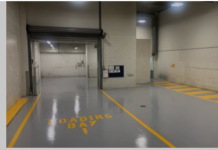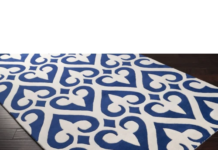If you’ve ever marveled at the intricate patterns and textures of stamped cement, this article is for you.
Discover the fascinating history and modern adaptations of this versatile technique.
Explore the boundless possibilities of indoor and outdoor applications, and be inspired by innovative designs that break the mold.
Master the art of stamping cement with expert techniques and tools.
Learn how color can enhance your creative vision.
And embrace the eco-friendly advantages of stamped cement as a sustainable design solution.
Get ready to unleash your creativity and dive into the world of creative stamped cement.
Key Takeaways
– Stamped cement has a rich history and has evolved with advancements in technology and materials.
– It can be used for both indoor and outdoor applications, offering a wide range of patterns and textures.
– Designers are pushing the boundaries of stamped cement with innovative designs and techniques.
– Color plays a crucial role in stamped cement, enhancing the overall design and evoking emotions.
The History of Stamped Cement: From Ancient Techniques to Modern Adaptations
As you explore the history of stamped cement, you’ll discover the evolution from ancient techniques to modern adaptations.
The art of stamping patterns onto cement dates back centuries, with ancient civilizations using intricate designs to create visually stunning surfaces. These ancient stamped techniques involved carving patterns into wooden molds and pressing them onto wet cement, creating textures and designs that added beauty and sophistication to structures.
Over time, advancements in technology and materials have led to modern adaptations of stamped cement. Today, we’ve a wide range of stamps and tools that allow for more intricate and realistic patterns to be created. Additionally, the use of colorants and stains has further enhanced the creative possibilities of stamped cement, allowing for designs that mimic the look of natural stone, wood, and even tile.
The history of stamped cement showcases the ingenuity and creativity of humans, as ancient techniques have been refined and adapted to meet the demands of modern design.
Exploring the Versatility of Stamped Cement: Indoor and Outdoor Applications
Explore the versatility of stamped cement for both indoor and outdoor applications, allowing you to create unique and stylish surfaces in any space.
Stamped cement offers endless possibilities for enhancing the aesthetics of both indoor and outdoor areas. When it comes to indoor applications, stamped cement can be used to create beautiful and durable floors, countertops, and even feature walls. The wide range of patterns and textures available can help you achieve a variety of looks, from modern and sleek to rustic and traditional.
On the other hand, outdoor applications of stamped cement can transform your patio, pool deck, or driveway into a stunning and functional space. The durability of stamped cement makes it resistant to wear and tear, while its low maintenance requirements make it an excellent choice for outdoor surfaces. However, it’s important to consider the climate and weather conditions of your area, as extreme temperatures and freeze-thaw cycles can affect the longevity of stamped cement.
Innovative Stamped Cement Designs: Breaking the Mold
You can break the mold with innovative stamped cement designs that push the boundaries of traditional patterns and textures. Gone are the days of simple brick or stone imprints. Today, designers are exploring new possibilities and creating unique and captivating designs that truly stand out.
These innovative stamped cement designs challenge the norm, incorporating bold shapes, intricate details, and unexpected combinations. From geometric patterns to abstract motifs, these designs captivate the eye and add a touch of artistry to any space.
Mastering the Art of Stamped Cement: Techniques and Tools
When it comes to mastering the art of stamped cement, having the right tools is essential. From the stamping mats and texture skins to the release agents and coloring agents, each tool plays a crucial role in achieving the desired results.
It’s through the mastery of stamping techniques, such as proper placement and pressure, that creative design possibilities truly come to life, turning a plain slab of cement into a work of art.
Tools for Stamped Cement
Using the right tools for stamped cement can enhance your creative process and ensure precise and professional results. Stamped cement tools are essential equipment that every artist or contractor should have in their arsenal.
One of the most important tools is the stamp itself, which comes in various patterns and designs to create different textures and effects on the cement. Additionally, a good set of trowels and floats is necessary for smoothing and leveling the surface before stamping.
A concrete mixer is also essential for preparing the cement mixture, ensuring proper consistency and uniformity. As you delve into the world of stamped cement, mastering stamping techniques will become crucial to achieving the desired outcome.
With the right tools and techniques, you can transform ordinary cement into a work of art.
Mastering Stamping Techniques
To truly master the art of stamped cement, you must carefully and skillfully combine various techniques and tools.
The key to achieving a visually stunning result lies in mastering texture and creating intricate patterns. Texture is what gives stamped cement its unique and realistic appearance. By using different stamping techniques, such as troweling, swirling, and stippling, you can create a variety of textures that mimic natural materials like stone or wood.
Advanced patterns, on the other hand, require a keen eye for detail and precision. By experimenting with different stamp designs and layouts, you can create complex patterns that add depth and dimension to your stamped cement.
Whether you choose a simple texture or a more intricate pattern, mastering these stamping techniques will elevate your stamped cement projects to a whole new level of artistry.
Creative Design Possibilities
With a combination of techniques and tools, you can explore endless creative design possibilities in mastering the art of stamped cement. Creative stamping techniques allow you to add unique and intricate patterns to your cement surfaces, transforming them from plain and ordinary to visually stunning works of art.
By experimenting with different stamp designs, you can create textures that mimic natural materials like stone, brick, or wood. Additionally, you can use unconventional applications to push the boundaries of traditional stamped cement. Think outside the box and consider using stamps in unexpected ways, such as creating custom logos or incorporating personalized designs.
The key is to let your imagination run wild and to experiment with various techniques to achieve the desired effect.
The Role of Color in Creative Stamped Cement: Enhancing the Design
When it comes to creative stamped cement, color plays a crucial role in enhancing the overall design. Color symbolism in design can evoke certain emotions and create a specific atmosphere in a space. By carefully selecting color choices, you have the power to make a bold statement or create a subtle and harmonious effect.
Additionally, using different shades and tones can enhance the depth and dimension of the stamped cement, adding visual interest and intrigue to the design.
Color Symbolism in Design
Choose three vibrant colors that will bring life and energy to your creative stamped cement design. Color symbolism in design plays a crucial role in conveying emotions, creating visual impact, and enhancing the overall aesthetic appeal of a space.
Color psychology suggests that different colors evoke different feelings and emotions. For example, warm colors like red and orange can create a sense of passion and energy, while cool colors like blue and green can promote calmness and tranquility.
Cultural influences also play a significant role in color symbolism. In some cultures, red symbolizes luck and prosperity, while in others it may represent danger or love.
Therefore, when selecting colors for your stamped cement design, consider the intended mood and cultural connotations to create a visually striking and meaningful composition.
Impact of Color Choices
To create a visually stunning and impactful design with creative stamped cement, you should carefully consider the role of color and select vibrant hues that enhance the overall aesthetic appeal. Color plays a crucial role in design and has the power to evoke emotions, set moods, and create visual impact.
By understanding color psychology, you can strategically choose colors that align with the desired atmosphere of your space. For example, warm tones like red and orange can evoke feelings of energy and excitement, while cool tones like blue and green can create a sense of calm and tranquility. Additionally, bold and contrasting colors can add visual interest and make your design pop.
By harnessing the power of color, you can create a truly captivating and dynamic stamped cement design that leaves a lasting impression on anyone who sees it.
Now, let’s explore how to enhance depth with color.
Enhancing Depth With Color
To truly bring out the depth in your creative stamped cement design, you should experiment with different shades and tones of color while also incorporating various techniques to enhance the overall visual impact.
Color plays a crucial role in the perception of depth and can create a sense of dimensionality in your design. By understanding color psychology and how different colors evoke different emotions and reactions, you can strategically use color to enhance the depth of your stamped cement design. Darker colors tend to recede, creating the illusion of depth, while lighter colors can make an area appear more spacious.
Additionally, incorporating techniques such as shading, highlighting, and blending can further enhance the perception of depth by creating texture and adding visual interest. By mastering the use of color and texture, you can truly elevate your creative stamped cement design to new heights.
And speaking of elevating, let’s now explore how stamped cement serves as a sustainable design solution with its eco-friendly advantages.
Stamped Cement as a Sustainable Design Solution: Eco-friendly Advantages
You’ll be amazed at the three eco-friendly advantages of using stamped cement as a sustainable design solution.
Stamped cement offers numerous benefits when it comes to sustainable construction. Firstly, it’s an environmentally friendly option as it reduces the need for excessive resources. Unlike traditional construction methods, which often require the use of additional materials such as bricks or stones, stamped cement can be applied directly onto an existing surface, minimizing waste and reducing the carbon footprint.
Secondly, stamped cement is a durable material that can withstand harsh weather conditions and heavy traffic, resulting in reduced maintenance and replacement costs.
Lastly, stamped cement can be designed to mimic the appearance of natural materials such as wood or stone, providing an eco-friendly alternative to resource-intensive options.
Conclusion
In conclusion, the art of creative stamped cement offers a fascinating blend of history, innovation, and sustainability.
From its ancient roots to modern adaptations, this technique has evolved into a versatile design solution for both indoor and outdoor applications.
With innovative designs breaking the mold and the use of color enhancing the overall aesthetic, mastering the art of stamped cement requires technique and skill.
Its eco-friendly advantages make it a sustainable choice for those seeking unique and visually stunning design options.










